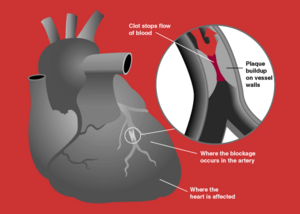What now?
-----
Posted: 25 November 2011
The first identified infection with the so-called "group N" strain of the human immunodeficiency virus (HIV) was found in 1998 in a Cameroonian woman who had progressed to AIDS.
Since then, more than 12,000 HIV-infected patients living in Cameroon have been tested for group-N infection, but only 12 cases, including two couples, have ever been found.
The new case, reported by French doctors, involves a 57-year-old man who was admitted to the Saint Louis Hospital Paris in January suffering from fever, rash, swollen lymph glands and genital ulceration.
The patient had high levels of a virus in the HIV-1 family, but tests to pinpoint the particular strain proved inconclusive. On February 9, the patient developed facial paralysis.
The French team then carried out further tests on blood samples, which were found to react in an antibody essay of the N strain.
Tracing his sexual history, the researchers believe the infection was "probably" acquired from intercourse with a partner in Togo, from which he had just returned.
"This case of HIV-1 group-N primary infection indicates that this rare group is now circulating outside Cameroon, which emphasises the need for rigorous HIV epidemiological monitoring," says the doctors, led by Professor Francois Simon.
The finding is important because the patient suffered not only severe symptoms but also a fast-track decline in his immune system, as shown in the number of his CD4 white blood cells.
He was given a powerful five-drug combination of antiretrovirals, to which he responded, but needs close monitoring in the future, the letter said.
Group N may have leapt to humans from chimpanzees, possibly through the handling of bushmeat infected with the simian equivalent of HIV, scientists say.
It is one of four sub-types of virus gathered in the HIV-1 family, the others being M, which is by far the most prevalent, O and P. The P strain, like O and N very rare, may have jumped to humans from gorillas, according to a study published in 2009.
There is also a minority viral family called HIV-2, which also may have passed to humans from animal primates.
-AFP/vl
Taken from ChannelNewsAsia.com; source article is below:
Rare strain of AIDS virus moves beyond Cameroon: doctors
-----
Posted: 25 November 2011
PARIS: A very rare strain of AIDS virus previously found only among a few people in Cameroon has most probably spread outside the West African country, according to a case reported by The Lancet on Friday.
The first identified infection with the so-called "group N" strain of the human immunodeficiency virus (HIV) was found in 1998 in a Cameroonian woman who had progressed to AIDS.
Since then, more than 12,000 HIV-infected patients living in Cameroon have been tested for group-N infection, but only 12 cases, including two couples, have ever been found.
The new case, reported by French doctors, involves a 57-year-old man who was admitted to the Saint Louis Hospital Paris in January suffering from fever, rash, swollen lymph glands and genital ulceration.
The patient had high levels of a virus in the HIV-1 family, but tests to pinpoint the particular strain proved inconclusive. On February 9, the patient developed facial paralysis.
The French team then carried out further tests on blood samples, which were found to react in an antibody essay of the N strain.
Tracing his sexual history, the researchers believe the infection was "probably" acquired from intercourse with a partner in Togo, from which he had just returned.
"This case of HIV-1 group-N primary infection indicates that this rare group is now circulating outside Cameroon, which emphasises the need for rigorous HIV epidemiological monitoring," says the doctors, led by Professor Francois Simon.
The finding is important because the patient suffered not only severe symptoms but also a fast-track decline in his immune system, as shown in the number of his CD4 white blood cells.
He was given a powerful five-drug combination of antiretrovirals, to which he responded, but needs close monitoring in the future, the letter said.
Group N may have leapt to humans from chimpanzees, possibly through the handling of bushmeat infected with the simian equivalent of HIV, scientists say.
It is one of four sub-types of virus gathered in the HIV-1 family, the others being M, which is by far the most prevalent, O and P. The P strain, like O and N very rare, may have jumped to humans from gorillas, according to a study published in 2009.
There is also a minority viral family called HIV-2, which also may have passed to humans from animal primates.
-AFP/vl
Taken from ChannelNewsAsia.com; source article is below:
Rare strain of AIDS virus moves beyond Cameroon: doctors


















